After almost a full week of rest, I’ve had a lot of time to reflect on the experience at Antelope Canyon. Being my first ultra, I think I could accurately be called a ‘newb’ as it relates to the whole experience. Looking back, I was surprised by the overall difficulty of the course. I know, that sounds totally silly considering the name ‘ultra,’ but I ultimately associated that with the distance being anything over 26.2, and not just the course itself. I did know about the sand; that was no surprise. But I wanted to share some of the aspects of the build up and actual race day that I found through my pre-race research and actual race day experience. Let’s start with training.
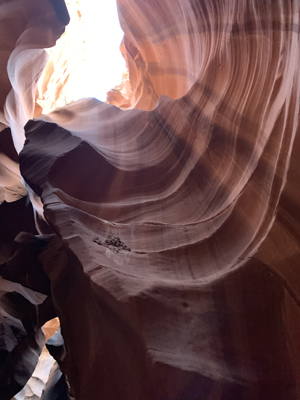
Training for my first ultra, I relied on a few sources to develop my training plan. First off, the experience of my running buddy, Rachel, who convinced me to take part in this crazy endeavor itself. She had sold me on the idea by telling me that I didn’t have to run my high miles in a single day, but that I could do back to back days on the weekends. My weekend mileage would still climb towards race day numbers, as well as my overall weekly mileage, but I wouldn’t have to be gone from my family for a whole day for multiple weeks in a row. From there, I found a first 50-miler training plan on the Ultra Ladies website. I actually found a couple of plans, but I stuck most closely to this one. I tweaked it a little based on existing races and already planned events, but tried to keep the weekly total mileage as close to the intended totals as possible. I did find that on race day itself, my issues didn’t really relate to not feeling like I hadn’t trained enough from my long runs, so I’d say that the race plan was a success.
Going into race day, I did the full two week taper, with my last long run being the weekend of February 16th. The taper always makes me nervous and this time was no different, but I really tried to listen to my body and take it easy before the race day. When looking at my weekly totals, my miles started to average between 50 to 60 the last few weeks leading up to the taper. The best part of this training was that my body got so used to the higher mileage, that I was rarely sore after these long runs. Over the last couple of years, after my first few marathons, I was basically useless for two days after. With this training plan, that feeling was virtually gone. It was a pretty cool experience, seeing my mileage threshold and recovery time change. Even after the race day, I was a little sore the next morning, but my biggest issue was my sunburn.
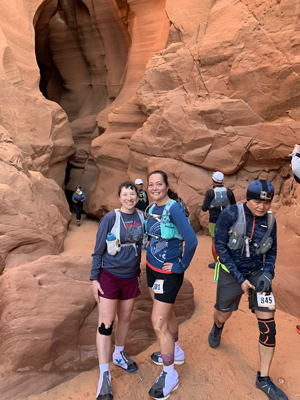
Other questions that came up during training included: how would it be running in sand? Well, there was no skirting around that. It was rough. The sand literally felt like it was sucking the life out of you as you sank into it and tried to move through it. Some sections were better than others, but when it was deep sand, there was virtually nothing you could do about it. I tried to think about being light on my feet, but sometimes you just have to walk (especially when you’re moving faster walking than you would be trying to run through it). If you were considering Antelope Canyon, I would definitely recommend trying to get access to some sandy locations to practice. Unless you are actually in the desert, it won’t be exactly the same, but a beach would give you a good idea of the amount of effort to run in similar conditions. And no, not the section by the water but the actual deep sand. Throw on some gaiters and you’re set!
Speaking of gaiters, I had a lot of people ask me if my feet were hot with them on. Honestly, it didn’t bother me, and I don’t do well with heat. But the temperature on race day was pretty mild with the high being mid-50’s. I would take a little extra heat than having sand in my shoes, any day.
I also mentioned in my previous post that I used both anti-chafing creams and Injiji toe socks. I didn’t change my socks mid-run because I was a little nervous that with swelling, I wouldn’t be able to get a new pair on, but I don’t think it would have changed too much for me given the distance and the fact that nothing else was bothering me in my shoes. When speaking to the race director after the event, he said he changes his toe socks regularly throughout an ultra and has never had major issues with blisters. If I were to do another one, I might give that strategy a try. I did pack for these changes with an extra pair in both one of my drop bags and in my hydration pack; I just didn’t end up using them. While I didn’t have a big problem with blisters, I agreed with other runners complaining about how the sand made your feet slide around a bit more, causing discomfort from your foot being in awkward positions in your shoes. The biggest impact of this being when the only blister that formed from the race popped (sorry, TMI) while running. But I don’t know what else could have prevented that as my shoes were appropriately sized up… I think it’s just a downside of running on an uneven, shifting surface.
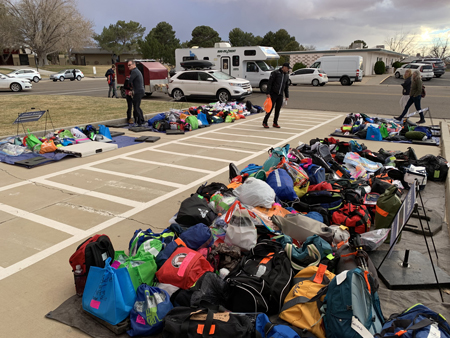
Drops Bags were another unfamiliar item to me. Running a marathon, you don’t get such luxuries. And when I heard about the types of items offered at the aid stations (think basically sweet and savory snack buffets), I didn’t understand how I would really need anything else. But I dug around and found a lot of great advice, usually relating back to the mantra of ‘don’t try anything new on race day.’ I couldn’t guarantee what foods would be at aid stations and how my stomach would react to them, so I made sure to put items that I had used during training within my drop bags. These included Bobo’s Bars, Honey Stinger gummies (I prefer gummies to gels) and waffles, Sunshine natural energy drink, beef jerky, etc. This was definitely a win in my book as I didn’t have to worry too much about something upsetting my stomach, especially once I was completely over the regularly occurring quesadillas at the aid stations. I’m also just not a big soda drinker. I don’t like a lot of sugared drinks, but I had trained with Sunshine (NC local company) on a couple of long runs, and knew it wouldn’t upset my stomach. I had a couple of cans in my drop bags and it was a nice change from water and the limited electrolyte drinks that I could stomach on the course. The same for my other snacks as I really didn’t eat too much from the aid station tables.
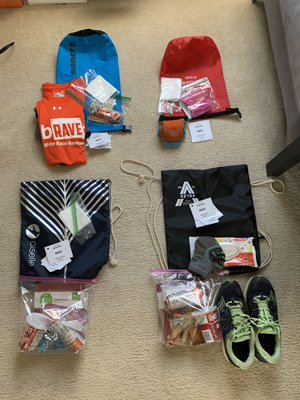
I was also able to use my drop bag as a place to get rid of some items throughout the race. Starting the race in the cold, I was able to ditch my long sleeve shirt for a while (until we made it back to that aid station again and I found the temperature change called for me to put it back on), and my buff. I wouldn’t recommend putting any valuables in your drop bag or anything that you know you will 100% need later in the race. There were some issues of bags not being at a station the second time around, having already been returned to the finish line. So I was glad that I had my headlamp on my person for the evening miles.
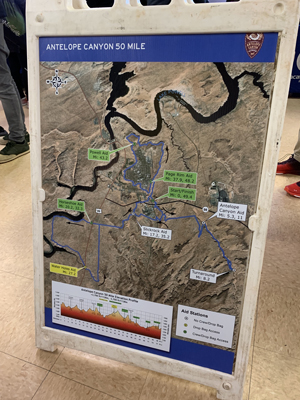
How the drop bags worked were that you dropped them off at the expo (or worst case, morning of the race), and had them labeled for specific aid stations. I charted out which aid stations we would hit up twice, where the mileage was for each one, and tried to predict certain supplies I would need. For example, I thought I’d want to change out my shirt half way through (and possibly my sports bra), so I threw a spare in a drop bag around the mid-way point. While that thought was good, I actually wanted it a bit later in the race as I was still comfortable in my tank top at the midway point. I’d recommend giving yourself a couple of drop bag options for those situations.
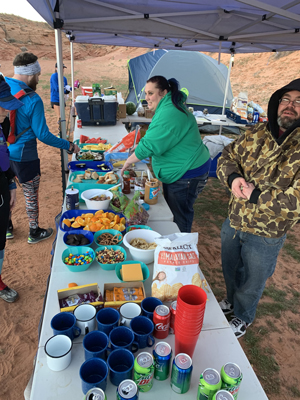
Were poles necessary? I saw this question come up a lot on message boards leading up to the race. It seemed like the general consensus was ‘no’. I did see a few people with poles, though from what I could tell, they were mostly 100 milers. I do think there were a few sections where poles really could have been beneficial for stability during climbing. And if I was running 100 miles, it probably would help keep me upright and provide ease in moving forward at some point in the middle of the night when I was just exhausted. But I agree that they wouldn’t be necessary for this race.
Funny side story: We were running and saw these little holes in the ground along the way. Rachel asked ‘I wonder what creature is creating those or living in them.’ We pondered this for a bit before she exclaimed ‘oh, it’s not from an animal, it’s from the runner poles.’ I wish we could say we had been running enough to be hallucinating but we got a good laugh out of it.
Do I need trail shoes? This was another question where I received an overwhelming response of ‘no’ but honestly, I think trail shoes would have helped on some of the rocky terrain that we tackled. While it wouldn’t do much in the sand, there were quite a few parts of the race where I felt like a little extra traction on my shoes would have been really beneficial. I wouldn’t get trail shoes just for the purpose of this race, especially if I had a pair of road shoes that I loved, but if I was shopping for trail shoes or already had them, then yes, I would have absolutely used them on race day.
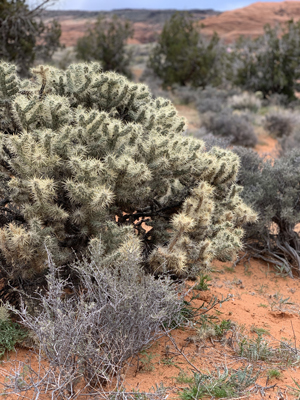
Hopefully this information was useful to you if you’re looking at a race similar to Antelope Canyon or if you’re training for your first ultra and want to understand some of the logistics questions that I faced. I’ve already started looking into other races for next year as this year is pretty full, and I’m considering a few more trail races or possibly lower mileage ultras to throw into the mix.
If you’ve done an ultra or even Antelope Canyon before, what were some lessons learned or favorite tips that you share with other runners?

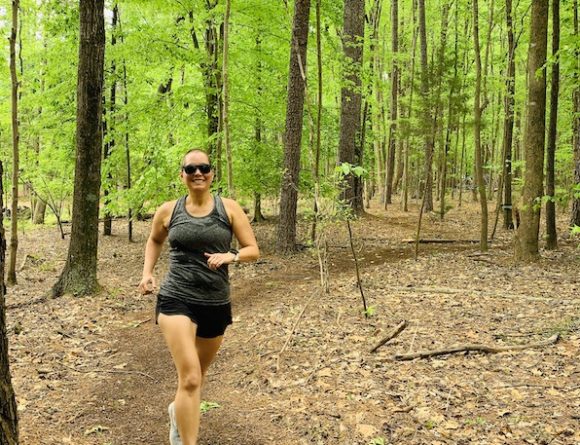
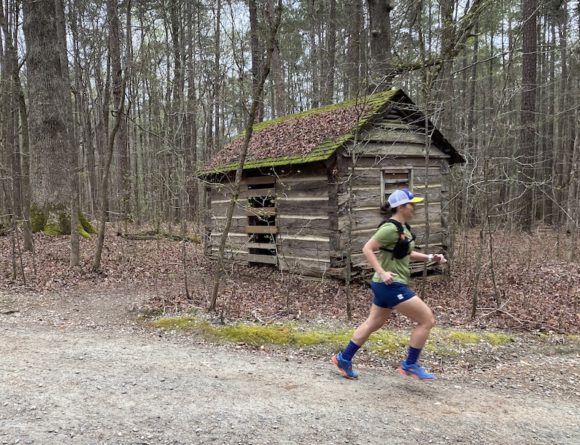
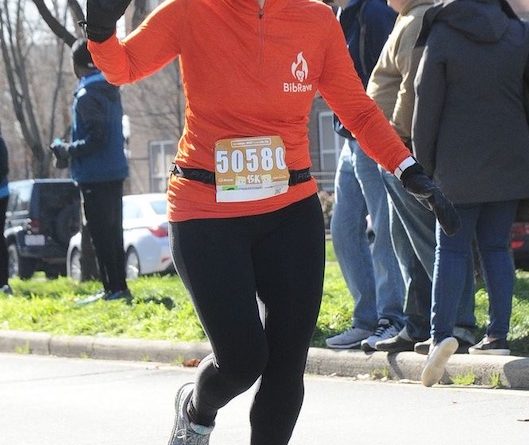
1 Comment
I used trail shoes (for the half) and honestly I was debating if I had made the right choice most of the time, since I hadn’t realized how much we’d be running on straight up rock. The extra grip was awesome, but mine had a rock plate which I’ve heard you’re not supposed to run on hard surfaces with (so they’re prefect for my usual New England dirt trails).
March 17, 2019 at 2:31 pm